Have you ever wondered how some people seem to effortlessly achieve their goals while others struggle to make progress? It turns out that the way we think about our goals can have a profound impact on our ability to achieve them. One tool that has gained popularity in recent years is visualization. But what is visualization, and how does it affect our brains? Can it really help us achieve our goals, reduce stress and anxiety, and improve athletic performance? In this article, we will explore the science behind visualization, its benefits, and how to effectively use visualization techniques. Join us on this journey to discover the power of visualization and how it can transform your life.
What Is Visualization?
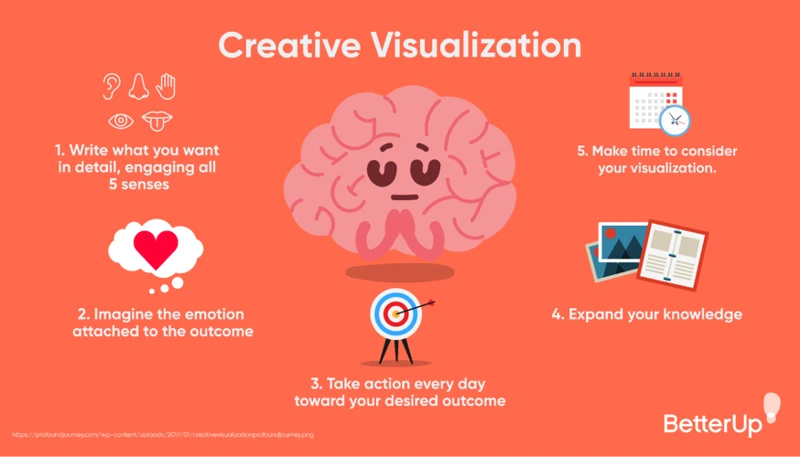
When it comes to achieving our goals, the power of visualization can be an effective tool. But what exactly is visualization? How does it work in our brains, and what are the different techniques we can use to practice it? Understanding the fundamentals of visualization is the first step towards integrating it into our lives and reaping its benefits. In this section, we will explore the definition and different types of visualization, laying the groundwork for further discussion on the science and application of this technique. For those interested in guided visualization exercises for spiritual growth, visit the link here.
The Definition of Visualization
Visualization is the process of creating mental images or pictures in one’s mind. It involves using sensory information and the imagination to simulate experiences and situations that feel real, despite not being physically present. There are various types of visualization techniques, including guided imagery, affirmations, and mental rehearsal.
Visualization can be used for a wide range of purposes, from reducing stress and anxiety, to improving athletic performance, to achieving personal and professional goals. It can be a powerful tool for self-improvement and personal growth.
Some people may assume that visualization is simply daydreaming, but it actually involves a much more focused and intentional effort to create mental images that serve a specific purpose. It can be practiced alone or with guidance from a professional, such as a therapist or coach.
Learning how to effectively use visualization techniques can take time, practice, and patience. It requires the ability to vividly imagine different scenarios and experiences and focus on the details that make them feel real. By doing so, visualization can have a powerful impact on one’s emotions, perceptions, and behaviors.
For more information on the benefits of visualization practice, check out our previous article on the topic.
The Different Types of Visualization
There are different types of visualization techniques that people use for various purposes. The first type is creative visualization. It is a technique where individuals create vivid mental images of things they want to draw into their lives. This approach involves creating a detailed mental image of a desired outcome or goal. Using positive affirmations, it aims to produce a positive change in behavior, feelings, and thoughts. One common practice is creating a vision board where people assemble pictures and affirmations representing their aspirations. To learn more about vision boards, check out our article on “How to Use a Vision Board to Manifest Your Dreams.”
The second type of visualization is guided imagery, which is like going on an imaginative journey where a mental image guides your experience. Guided imagery typically involves a script or recording of a person’s voice which leads the listener through a peaceful scene like the beach, forest, or any other relaxing environment. This technique is helpful in reducing stress levels and achieving a deep state of relaxation. If you want to learn more about using visualization techniques to reduce stress, check out our article on “Using Visualization for Deep Relaxation and Stress Relief.”
Thirdly, there is mental rehearsal or performance visualization. This technique involves envisioning oneself performing a task or activity to improve performance in a particular area such as sports or public speaking. First, individuals mentally visualize themselves accomplishing the desired outcome or task with all the associated feelings like confidence, success, and inner motivation. They envision themselves overcoming obstacles and achieving their goals. This technique is beneficial in enhancing skills and gaining a competitive edge. To learn more about using visualization to overcome limits, check out our article on “Using Visualization to Overcome Limits and Reach Your Full Potential.”
The fourth type is lucid dreaming visualization, which involves attentive awareness in a dream state, often with the aim of controlling the outcome of the dream. One can intentionally induce lucid dreams through visualization exercises before going to bed. Once in a lucid dream, the individual has complete control over their thoughts and actions. This technique is helpful in exploring the subconscious and overcoming fears. To learn more about lucid dreaming techniques, check out our article on “How Visualization Can Help With Lucid Dreaming.”
The Science Behind Visualization
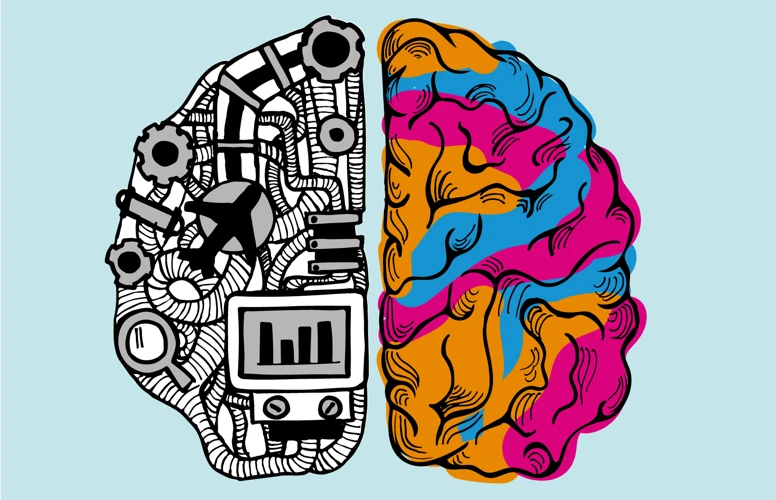
When you close your eyes and visualize, you may feel that you are merely daydreaming. However, the idea of visualization has been studied and proven by science to have a significant impact on your brain and behavior. Visualization is a technique that involves creating a mental image of a situation, setting a goal, or achieving a desired outcome. Understanding the science behind visualization can help you harness its power to improve your life. In this section, we will explore the neuroscience of visualization, the link between perception and reality, and how emotions intertwine with this technique.
The Neuroscience of Visualization
When it comes to the science behind visualization, there are several key factors at play. One area of focus is the neuroscience behind how visualization works in the brain.
Research has shown that when you visualize a specific action or outcome, the same areas of your brain are activated as when you actually perform that action or experience that outcome. This is due to the way that the brain processes sensory information – when you imagine something vividly enough, your brain essentially creates a mental image that can be almost as real as the physical image.
In addition to activating the same areas of the brain as an actual experience, visualization can also lead to a strengthening of neural pathways that are associated with that experience. So if you consistently visualize yourself, for example, performing a certain task with confidence and success, those neural pathways will become stronger and more easily activated over time.
Visualization can even have an impact on the structure of the brain itself. One study found that participants who engaged in visualization exercises over the course of several weeks had increased gray matter in the part of the brain associated with motor imagery.
These findings suggest that visualization can be a powerful tool for rewiring your brain and improving your ability to perform certain tasks or achieve certain outcomes. However, it’s important to keep in mind that visualization alone may not be enough to achieve your goals. Combining visualization with active effort and goal-setting can help ensure that you are taking meaningful steps towards your ideal self.
The Relationship Between Perception and Reality
The relationship between perception and reality is a complex and fascinating topic. While we tend to think of our perception as an accurate reflection of the world around us, the truth is that perception is a highly subjective and dynamic process.
Our brain relies on visual cues and other sensory information to create a mental representation of our environment. However, this process is not always infallible. For example, optical illusions demonstrate how our brains can be easily fooled by visual information that doesn’t quite match up with reality.
Our past experiences and emotions can also impact our perception of reality. This is why two people can experience the same event in very different ways. Our brain’s interpretation of events is highly individualized and influenced by a complex array of factors.
This relationship between perception and reality is further complicated by the fact that our perceptions can actually influence the reality we experience. For example, if you believe that you are capable of achieving a certain goal, that belief can actually help make it a reality. This is the concept behind visualization.
By visualizing a desired outcome, we can actually influence our perception of reality in a way that makes that outcome more likely. This effect is not magical or mystical, but is based on real and measurable psychological processes.
| Perception | Reality |
|---|---|
| Subjective | Objective |
| Influenced by past experiences and emotions | Not influenced by past experiences and emotions |
| Can be influenced by visual cues and optical illusions | Cannot be influenced by visual cues and optical illusions |
| Can influence reality through visualization | Can be influenced by perception |
The relationship between perception and reality is complex and multifaceted. While our perception is not always an accurate reflection of reality, it plays a critical role in shaping our experiences and beliefs. By understanding this relationship and harnessing the power of visualization, we have the ability to influence our perception of reality in a way that can help us achieve our goals and live fulfilling lives.
The Connection Between Emotions and Visualization
Visualization is not just a visual process, but it also involves emotions. The emotions we feel while visualizing impact not only our mental state but also have physiological effects on our bodies. Let’s take a look at the connection between emotions and visualization in the table below:
| Emotion | Impact on Visualization | Physiological Effects |
| Happiness | Increases the effectiveness of visualization | Triggers the release of endorphins, which promote positive feelings and reduce pain perception |
| Fear | Can impede visualization and cause negative images to come to mind | Triggers the fight or flight response, which can elevate heart rate and blood pressure |
| Stress | Can make it difficult to focus on visualization and cause negative or anxious thoughts | Triggers the release of cortisol, the stress hormone, which can have numerous negative physical effects |
| Relaxation | Can enhance visualization and promote positive images and thoughts | Triggers the release of dopamine, which promotes feelings of pleasure and relaxation |
As you can see, the emotions we feel can greatly impact our ability to visualize effectively. It’s important to try to cultivate positive emotions while visualizing, such as happiness and relaxation, in order to enhance the effectiveness of visualization. This can be done through techniques such as deep breathing, meditation, and positive affirmations. By doing so, we can harness the power of both visualization and positive emotions to achieve our goals and improve our overall well-being.
The Benefits of Visualization
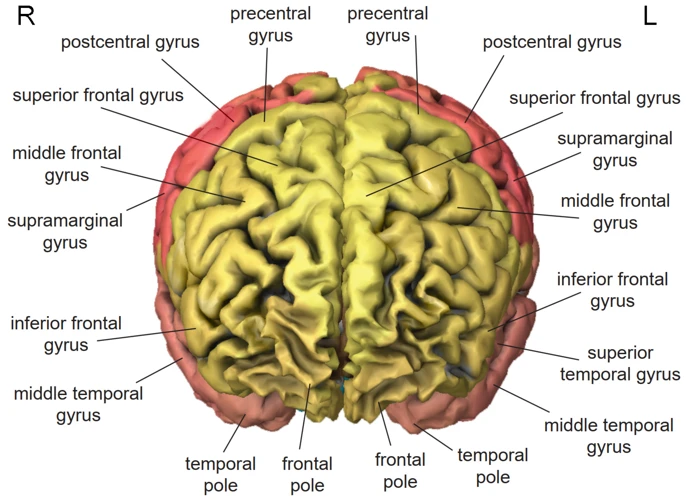
Mental imagery, or visualization, is a powerful tool that has been used for centuries to enhance performance, reduce stress, and achieve personal goals. Studies have shown that the use of mental imagery can have significant benefits on both physical and mental well-being. In this section, we’ll explore the various benefits of visualization and how it can help you achieve your goals, reduce stress and anxiety, and even improve athletic performance. Additionally, we’ll discuss different visualization techniques you can use to help unlock these benefits in your own life.
How Visualization Can Help You Achieve Your Goals
Visualization is a powerful tool that can assist you in achieving your goals. It involves creating a mental image or scenario in your mind of what you want to accomplish. This technique can be a highly effective way to bring your desires into reality. Below are some ways in which visualization can help you achieve your goals:
| Increased Motivation | Increased Confidence | Improved Clarity |
|---|---|---|
| Visualization activates the same brain regions that are responsible for real-life actions, leading to increased motivation to pursue your goals. | When you visualize yourself achieving your goals, you experience a boost in confidence that you can turn into the necessary action to realize your dreams. | Visualization helps to clarify your desires and goals, making it easier to identify the necessary steps to take to achieve them. |
| Leveraging the Law of Attraction | Unlocking Your Creativity | Building Resilience |
| The Law of Attraction says that you attract what you focus your attention on. Visualization helps you focus on what you want, and attract more of it into your life. | Visualization opens up possibilities for innovative thinking that can aid in achieving your goals through alternative perspectives. | Visualization can help develop mental toughness and resilience that helps you stay on track, overcome obstacles, and continue to work toward your goals, even when faced with adversity. |
Visualization can help you achieve your goals through increased motivation, confidence, and clarity. It can also help you leverage the law of attraction, unlock your creativity, and build resilience.
Reducing Stress and Anxiety with Visualization
Visualization can be used as a powerful tool to reduce stress and anxiety. Here are some specific ways in which it can help:
1. Calming the Mind
When we are stressed or anxious, our minds can become overwhelmed with negative thoughts and worries. Visualization exercises can help to calm the mind and bring a sense of peace and relaxation. By focusing on positive images and experiences, we can shift our attention away from negative thinking patterns and reduce feelings of stress and anxiety.
2. Relieving Tension in the Body
Stress and anxiety can also cause physical tension in the body, which can contribute to feelings of unease and discomfort. Visualization techniques can be used to release this tension and promote physical relaxation. By visualizing a peaceful scene, such as a beach or a forest, we can encourage our muscles to relax and let go of any tension or tightness.
3. Building Resilience
Regular practice of visualization can also help to build resilience to stress and anxiety over time. By intentionally visualizing positive outcomes and practicing relaxation techniques, we can train our brains to respond more positively to challenging situations. This can help us to better manage stress and anxiety in our daily lives.
4. Enhancing Mindfulness
Mindfulness is a technique that involves paying deliberate attention to the present moment, without judgment. Visualization exercises can help to enhance mindfulness by directing our attention to specific sensations or experiences. By focusing on the sights, sounds, and feelings associated with a peaceful image, we can cultivate a sense of presence and awareness that can counteract feelings of stress and anxiety.
5. Providing a Sense of Control
When we are feeling stressed or anxious, it can often feel like things are out of our control. Visualization exercises can provide a sense of control and empowerment by allowing us to imagine positive outcomes and take proactive steps to achieve them. By focusing on what we can control, we can reduce feelings of helplessness and increase our sense of agency in our lives.
Visualization can be a powerful tool for reducing stress and anxiety by calming the mind, relieving tension in the body, building resilience, enhancing mindfulness, and providing a sense of control. Regular practice of visualization exercises can help to promote overall well-being and improve our ability to navigate challenging situations.
Improving Athletic Performance with Visualization
Athletic performance can greatly benefit from the practice of visualization. The use of visual imagery in sports has been shown to improve a variety of skills, including motor control, functional equivalence, attention and concentration, and confidence.
Here are some ways that visualization can be used to improve athletic performance:
- Visualizing the Perfect Performance: Athletes can use visualization to mentally rehearse their desired outcome, imagining themselves completing a perfect routine or achieving a specific goal. This helps to create a sense of familiarity with the task at hand and can increase confidence and reduce anxiety.
- Visualization for Injury Rehabilitation: Visualization can also be used to enhance physical recovery in athletes who have been injured. Imagining oneself going through the motions of physical therapy exercises can help to stimulate motor circuits and maintain muscle tone and range of motion.
- Reducing Competition Anxiety: Anxiety is a common response to pressure situations, such as competitions or high-stakes games. By simulating pressure situations in one’s mind and visualizing oneself performing well under pressure, athletes can reduce competition anxiety and improve their performance.
- Developing Athletic Abilities: Visualization can also be used to develop specific athletic abilities, such as agility, reaction time, and strength. Simply visualizing oneself performing an exercise can stimulate the motor cortex and help to build muscle memory, resulting in improved physical performance.
- Relaxation Visualization: Find a quiet place to sit or lie down and close your eyes. Take a few deep breaths, inhaling deeply and exhaling slowly. As you breathe, imagine a wave of relaxation starting at the top of your head and flowing down your body all the way to your toes. Feel the tension leaving your body as the wave of relaxation flows through you. Imagine yourself in a peaceful, calming environment and let yourself fully relax and let go of any stress, tension or worries.
- Achievement Visualization: Close your eyes and picture yourself achieving your goal. Imagining your desired outcome really helps your brain understand what it is seeking and puts you in a positive mood to improve your chances of reaching that goal. As you visualize, use sensory details to make the image as vivid as possible. Picture any obstacles that might get in the way of your goals and imagine yourself overcoming them with ease. Once you have a crystal clear picture in your mind, take a moment to feel the joy and satisfaction of accomplishing that goal. Repeat this visualization frequently to reinforce the positive feelings and make them feel more natural.
- Gratitude Visualization: Imagine yourself in a place where you feel grateful and content. This can be a place you visited or even just a part of your home, like a cozy chair or your bed. As you visualize this place, focus on the things that make you feel grateful, such as your health, your loved ones or your achievements. Take a few moments to connect with the feelings of gratitude and contentment.
- Self-Confidence Visualization: Choose a situation where you would like to feel more confident, such as a job interview or public speaking engagement. Imagine yourself in that situation, feeling confident and self-assured. Picture yourself speaking clearly and smoothly, making a great impression on your audience. As you visualize this, use positive self-talk to reinforce your self-confidence.
- Visualization alone may not be enough to achieve your goals: Visualization can help you clarify your goals and create a plan of action, but it cannot replace the hard work and determination required to reach those goals. Visualization can be a helpful tool, but it is not a substitute for action.
- Not everyone responds to visualization: While some people are highly visual and find visualization exercises to be effective, others may not respond as well. Each individual is unique, and therefore, some people may find other methods more helpful. It’s important to find what works for you.
- Visualization cannot eliminate all negative emotions: While visualization can be effective in reducing stress and anxiety, it cannot eliminate negative emotions altogether. It is a tool that can help you manage these emotions, but it is not a cure-all.
- Visualization cannot change external circumstances: Visualization can help you change your internal mindset and perspective, but it cannot change external circumstances. For example, while visualization may reduce stress and anxiety, it cannot change a difficult external situation.
- Visualization cannot guarantee success: Visualization can help you clarify your goals and develop a plan of action, but it cannot guarantee success. Success depends on a variety of factors, including hard work, determination, and external circumstances.
Visualization can be a powerful tool in the athletic world, helping athletes to enhance their physical abilities, improve their mental states, and ultimately perform at their best. By using visualization techniques in conjunction with physical training, athletes can achieve their performance goals more effectively and efficiently.
How to Use Visualization Techniques

When it comes to achieving your goals, visualization can be a powerful tool. By using your imagination to create vivid mental images, you can improve your performance, reduce stress and anxiety, and boost your overall well-being. But how exactly do you use visualization techniques? In this section, we will explore various guided imagery and visualization exercises that you can incorporate into your daily routine. We will also discuss visualization techniques that can enhance your memory and cognitive abilities. With the power of visualization on your side, you can start making your dreams a reality.
Guided Imagery and Visualization Exercises
Guided Imagery and Visualization Exercises
Guided imagery and visualization exercises are powerful tools that can help individuals achieve their goals, reduce stress and anxiety, and enhance athletic performance. Here are some visualization exercises that you can try:
Try to incorporate visualization exercises into your daily routine, perhaps as part of a morning or evening meditation practice. Remember that the key to successful visualization is to use vivid, sensory details and focus on the positive emotions associated with achieving your goals. With practice, visualization can become a powerful tool for achieving personal growth and transformation.
Visualization Techniques to Improve Memory and Learning
Memory and learning are critical processes that affect many aspects of our lives, from academic achievement to professional success. Visualization techniques can be powerful tools for enhancing these processes. Here are some visualization techniques that can help improve memory and learning:
| Technique | Description |
| 1. Mental imagery | Visualize the information you wish to remember in a vivid and detailed way. For example, if you are learning a new language, imagine a scenario where you are having a conversation with a native speaker and actively using the words and grammar you are learning. |
| 2. Method of loci | Create a mental “memory palace” by associating specific pieces of information with specific locations in a familiar place, such as your home or school. When you need to recall the information, mentally walk through the location and retrieve it from the corresponding place. |
| 3. Mind mapping | Organize information into visual diagrams, using images, symbols, and keywords to represent different ideas and relationships. This can help you see connections and patterns between different pieces of information, making them easier to remember. |
| 4. Visualization meditation | Sit in a quiet place and visualize the information you wish to remember as though it is already stored in your brain. Imagine the knowledge as a glowing light or a physical object that you can hold and manipulate in your mind. Allow yourself to feel confident and capable of recalling the information when you need it. |
By incorporating these visualization techniques into your study or learning routine, you can improve your ability to remember and recall information, making it easier to succeed in your academic or professional pursuits.
The Power of Positive Affirmations
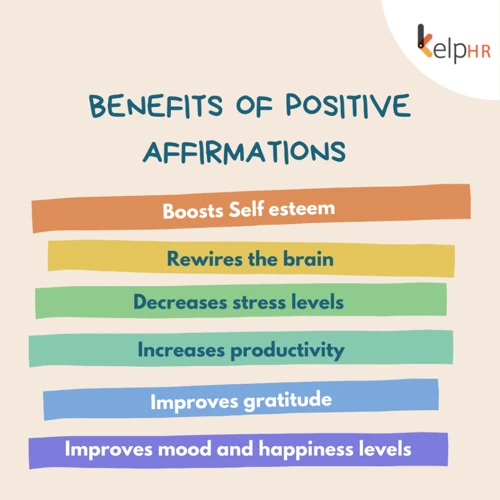
Have you ever heard the phrase “mind over matter”? It turns out that our thoughts have a powerful effect on our reality, and positive affirmations are a tool used to harness that power. By using specific language and visualization techniques, affirmations can help reprogram our brain and shift our mindset towards positivity and success. In this section, we will explore the science behind positive affirmations and how to create effective affirmations to achieve your goals.
How Affirmations Work in the Brain
Research has shown that affirmations can have a significant impact on the brain. Here are some ways in which affirmations work in the brain:
1. Activating Positive Neural Pathways: Affirmations can activate the reward centers in the brain, which release feel-good neurotransmitters such as dopamine and serotonin. This helps to create positive neural pathways in the brain, making it more likely for us to think positively in the future.
2. Strengthening Neural Connections: When we repeat affirmations, we are strengthening the connections between neurons in the brain, which helps to reinforce positive beliefs and attitudes.
3. Counteracting Negative Self-Talk: Affirmations can also help to counteract negative self-talk, which can be damaging to our self-esteem and overall well-being. By replacing negative thoughts with positive affirmations, we can boost our confidence and change the way we think about ourselves.
4. Improving Emotional Regulation: Affirmations can help us to regulate our emotions by reducing the stress response in the brain. This can lead to a greater sense of emotional balance and resilience in the face of challenges.
5. Enhancing Self-Efficacy: When we repeat affirmations, we are reinforcing positive beliefs about ourselves and our abilities. This can enhance our sense of self-efficacy, or our belief in our ability to achieve our goals. This, in turn, can lead to greater motivation and action towards achieving those goals.
Affirmations work in the brain by activating positive neural pathways, strengthening neural connections, counteracting negative self-talk, improving emotional regulation, and enhancing self-efficacy. By incorporating affirmations into our daily routine, we can reap the many benefits that they offer for our mental health and well-being.
Tips for Creating Effective Affirmations
Effective affirmations can be a powerful tool for reprogramming your mind and achieving your goals. Here are some tips for creating affirmations that will work for you:
| 1. Be specific | Avoid vague statements and focus on a specific goal or outcome. |
| 2. Use the present tense | Phrase your affirmation as if it is already true, rather than a future possibility. |
| 3. Be positive | Avoid negative words and focus on what you want to achieve, rather than what you want to avoid. |
| 4. Use emotional language | Incorporate language that evokes positive emotions and reinforces the feeling of already having achieved your goal. |
| 5. Keep it brief | Affirmations should be concise and easy to remember, so you can repeat them often throughout the day. |
| 6. Make it believable | Affirmations that feel unrealistic or impossible are unlikely to be effective. Choose statements that are challenging but still within reach. |
| 7. Repeat, repeat, repeat | For affirmations to be effective, they need to be repeated frequently, preferably daily. Find a time and a place where you can repeat your affirmations regularly. |
By following these tips, you can create affirmations that effectively program your brain for success and help you achieve your goals. Remember to stay consistent and persistent in your practice, and to pair your affirmations with action toward your desired outcome.
Common Myths and Misconceptions
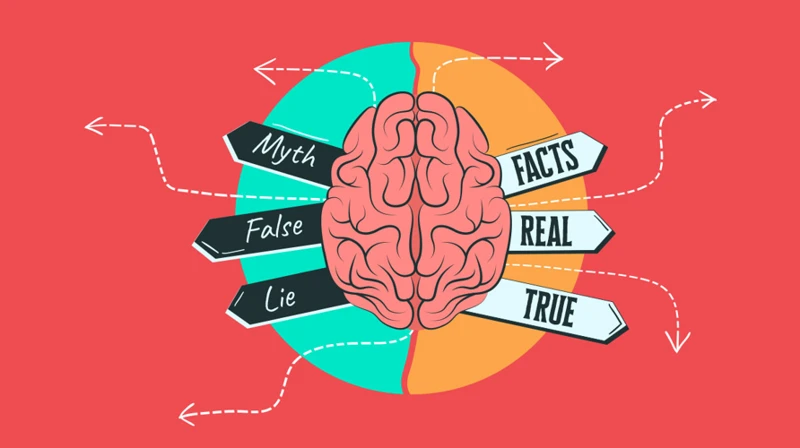
As with any concept that grows in popularity and becomes more mainstream, there are often myths and misconceptions that arise. Visualization is no exception. Some people may believe that visualization is a magical cure-all or that it requires no action on their part. However, these beliefs are simply not true. In this section, we will explore some of the most common myths and misconceptions surrounding visualization and discuss the realities of this powerful practice.
The Role of Action in Achieving Your Goals
The Role of Action in Achieving Your Goals
While visualization can be a powerful tool in achieving your goals, it’s important to remember that it’s only one piece of the puzzle. Action is also essential in turning your dreams into reality.
| Myth | Reality |
|---|---|
| You can achieve your goals simply by visualizing them. | Visualization is just the first step. Taking action and putting in the hard work is necessary for success. |
| Visualizing success will magically make it happen without any effort. | Visualization can help clarify your goals and motivate you to take action, but success requires effort, persistence, and dedication. |
| Visualizing your goals means you don’t have to take risks or step out of your comfort zone. | To achieve your goals, you may need to take risks and step out of your comfort zone. Visualization can help you prepare for these challenges, but ultimately, action is necessary. |
Takeaway
While visualization is a powerful tool, the key to achieving your goals is taking action. Use visualization to clarify your goals and motivate yourself, but then take concrete steps towards making those goals a reality. Remember that success requires effort and dedication, and that visualization is just one part of the process.
The Limits of Visualization
Although visualization can be a powerful tool, it is not a panacea that can solve all problems. There are certain limits to what visualization can achieve. Here are some important limitations to be aware of:
It’s important to keep in mind that while visualization can be a powerful tool, it is not a magic solution. It cannot replace the hard work required to achieve your goals, nor can it change external circumstances beyond your control. However, when used in conjunction with action, visualization can be a valuable tool for achieving success and improving overall well-being.
The Future of Visualization Research
Looking ahead, it is clear that visualization research holds great promise for the future. With advances in technology, researchers are able to study the brain in more detail than ever before. This has led to exciting new discoveries about how the brain processes and responds to visual information.
Scientists are currently exploring ways to use visualization techniques to treat a range of mental health conditions, from anxiety and depression to posttraumatic stress disorder (PTSD). There is evidence to suggest that visualization-based therapies, such as guided imagery and exposure therapy, can be effective in reducing symptoms of these conditions.
One area of ongoing research is the use of virtual reality (VR) in visualization. VR technology allows users to fully immerse themselves in a simulated environment, making it an ideal tool for visualization exercises. Researchers are exploring how VR can be used to improve mental health outcomes, as well as its potential applications in education, sports training, and even marketing.
Another exciting area of research is the use of visualization in enhancing creativity and problem-solving. Studies have shown that visualization techniques can help individuals come up with new ideas and solutions to problems by stimulating the brain’s neural networks. This has led to interest in using visualization as a tool for innovation and entrepreneurship.
As the field of visualization research continues to evolve, it will be important for scientists and practitioners to work together to develop evidence-based techniques that can be effectively used in a range of settings. With the potential to improve mental health outcomes, enhance performance, and foster creativity, visualization techniques hold great promise for the future.
Conclusion
In conclusion, visualization is a powerful tool that can have a profound impact on your brain and overall well-being. Through visualizing and imagining positive outcomes, you can rewire your brain and improve your chances of achieving your goals.
The science behind visualization has shown that the brain cannot always distinguish between what is real and what is imagined. This means that when you imagine yourself succeeding, your brain begins to believe it to be true, thus increasing your confidence and self-esteem.
Additionally, visualization has been found to help reduce stress and anxiety, improve athletic performance, and enhance memory and learning. By utilizing guided imagery exercises and positive affirmations, you can begin to harness the power of visualization in your everyday life.
While it is important to recognize the limits of visualization and the role that action plays in achieving your goals, the benefits of visualization should not be overlooked. With continued research and exploration, there is no telling the full potential of visualization in the future.
Overall, incorporating visualization techniques and positive affirmations into your daily routine can lead to improved mental and physical health, increased confidence, and greater success in achieving your goals.
Frequently Asked Questions
What is the difference between visualization and imagination?
Visualization involves creating mental images specifically related to achieving a certain goal or outcome, whereas imagination involves creating mental images purely for enjoyment or entertainment.
Is visualization just for athletes and performers?
No, visualization can benefit anyone looking to achieve a certain goal or overcome obstacles throughout their daily life.
How long should I visualize for?
It is recommended to visualize for at least 10-15 minutes every day to see significant results.
Can visualization alone help me achieve my goals?
Visualization alone is not enough to guarantee success. It is important to use visualization as a tool to guide and motivate action towards achieving your goals.
Are there any side effects to visualization?
No, there are no known negative side effects to visualization techniques.
Can visualization be used to treat mental health issues?
Visualization can be used as a complementary technique to help reduce symptoms of anxiety, depression, and PTSD.
How do affirmations tie into visualization?
Affirmations are positive statements used to reinforce the mental images created through visualization techniques.
Can children benefit from visualization techniques?
Yes, visualization can be a beneficial tool for children to improve their confidence and academic performance, as well as reduce stress and anxiety.
Is visualization scientifically proven to work?
There is growing scientific evidence supporting the effectiveness of visualization techniques in achieving goals, reducing stress, and improving performance in various areas.
Can visualization be used for pain management?
Yes, visualization techniques have been used as a complementary therapy to reduce pain and discomfort in patients with chronic pain conditions.








